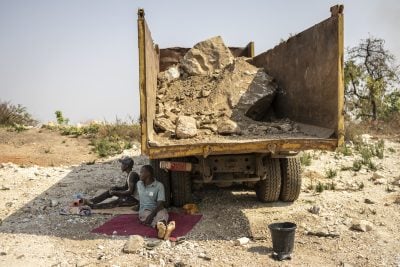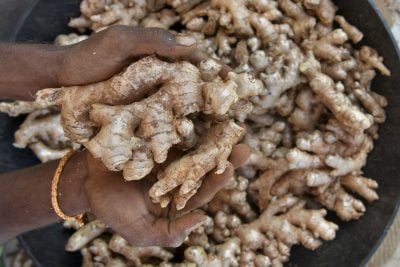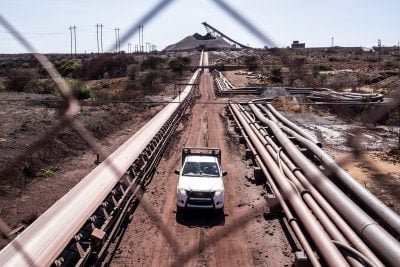Not even climate change deniers can dispute that the world is now plagued by terrible weather extremes – from violent floods to searing droughts, from freezing snowstorms to burning firestorms. One disaster after another. Not so much global warming as global weirding.
Yet there’s still a tendency in all of us to think and act in silos even though so many things are interconnected. Examples include entirely separate summits for climate change and biodiversity summits – the United Nations Climate Change Conference and the United Nations Biodiversity Conference.
Nature and climate problems are interconnected
But surely it’s the case that healthy ecosystems and biodiversity are connected to a safe and sustainable climate? Equally, that climate change is massively impacting the very ecosystems upon which all life depends?
Consider just one example amongst countless others. In Spain over the past 10 years fires have destroyed 843,742 hectares of forest, with the figure for 2022 three times as high as the previous year.
This is due not only to climate change but also non-climate factors, notably rural depopulation as people have shifted to urban areas, meaning nobody is grazing the sheep which for centuries used to clear the very undergrowth in which fires can feed so rampantly.
A solution? Some have suggested reintroducing European bison, which became extinct in Spain 10,000 years ago. Before then, they grazed and foraged, opening up dense parts of forest, letting in light. That in turn promoted grass growth which lowered fire risk as, even more so, did roaming bison herds’ habits of eating masses of vegetation on forest floors such as wood fibre, shoots and leaves.
But of course it could be risky re-introducing large animals like bison in the absence of the kind of predators and competitors they used to face when they were in their prime.
Biodiversity is the foundation for all human life: the food we eat, the air we breathe, and also a barrier against fire and flooding – in other words, climate failure.
For a century now there has been a terrible collapse in wildlife numbers. Scientists claim that over 50bn years of cumulative evolutionary history is at risk of extinction.
Insect species have declined by about 2.5% each year over the last decade or so. The cause: habitat loss, invasive species, pollution, disease – and above all humankind-induced climate change.
Freshwater systems – rivers, lakes and wetlands – have declined by over 80% since 1970, even more than wildlife, which has dropped by 70%.
Stopping free-flowing rivers by damming them damages migratory fish species. Polluting rivers and seas damages freshwater cetaceans, tropical amphibians and other marine species.
The Living Planet Index, published by the Worldwide Fund for Nature, estimates a 69% decline in wild species since 1970: nearly 30 extinctions each and every day, with climate change their main threat.
More than a fifth of all reptile species are threatened with extinction. And that could have a devastating impact on our ecosystems.
If you remove reptiles, you would increase pest insects, damaging the environment for people. Reptiles control rats, mosquitoes and other “pests”. They disperse seeds, especially in islands.
Most people are frightened of snakes. But snake venom has been used to develop important drugs to help treat ill people – not just as an antidote to snake bites, also for hypertension.
Researchers reckon over a tenth of plant and animal species could be lost by the end of the century, maybe over a quarter in a worst-case scenario of global heating. There’s an accelerating spiral of extinctions: predators losing their prey, parasites losing their hosts, each in turn badly rupturing nature.
Supposing for instance antelope die off because soaring heat triggers catastrophic losses of grasses and leaves, then left without food their predators will also die off. So will parasites losing their hosts because of deforestation, and flowering plants losing their pollinators.
Time to join up our thinking
Yet humankind is completely dependent on our biosphere for the air we breathe, the food we eat, the water to fuel all life, as well as fibres, wood and medicines.
Without nature regulating and sustaining our planet, and therefore humankind, life as we have become used to it, will become impossible.
Early warnings of things breaking down completely are more and more zoonotic diseases – infectious diseases caused by a pathogen, an agent, such as a virus, that has jumped from an animal to a human who gets infected and transmits the infectious agent to at least one other human who then infects others.
Covid-19, SARS, Ebola and HIV-AIDS are each reminders that abusing nature is catastrophic for humans.
Every species is connected to others and dependent on others, including us humans who are destroying so much of what sustains the very basis of life itself.
Merging the climate change and biodiversity global summits could make a start in tackling that existential threat.
This article originally appeared in IC Intelligence Insight 09: Climate & Nature Redux. Click to view more articles from the report.
Want to continue reading? Subscribe today.
You've read all your free articles for this month! Subscribe now to enjoy full access to our content.
Digital Monthly
£8.00 / month
Receive full unlimited access to our articles, opinions, podcasts and more.
Digital Yearly
£70.00 / year
Our best value offer - save £26 and gain access to all of our digital content for an entire year!

 Sign in with Google
Sign in with Google 



